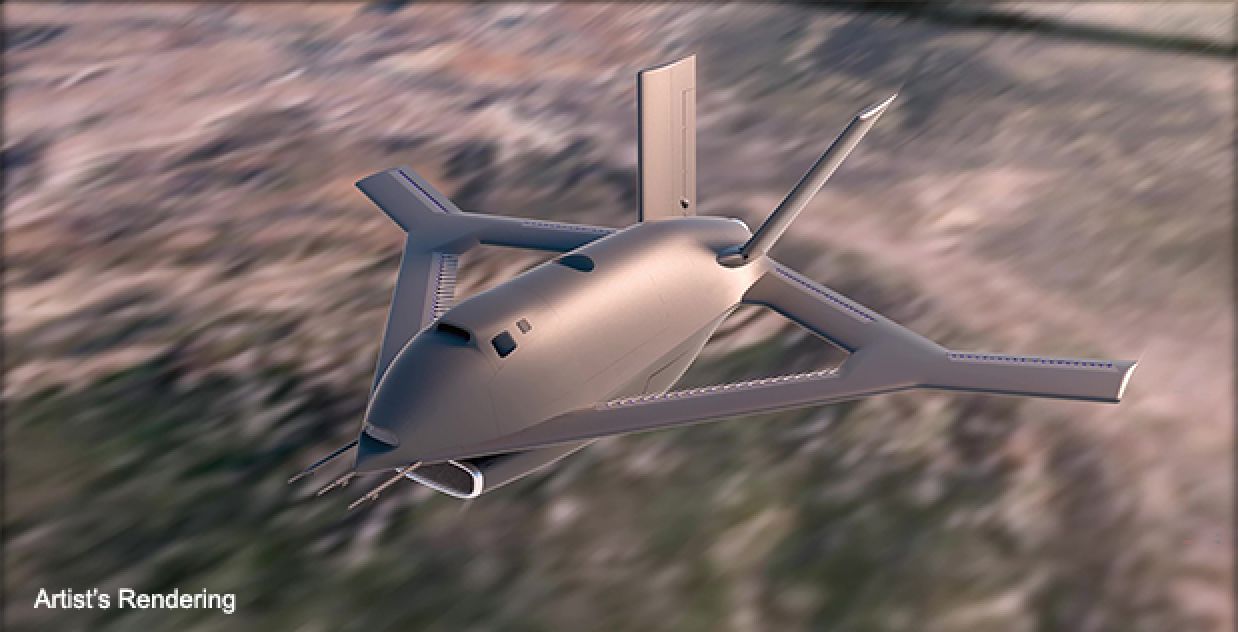Follow us on Google News (click on ☆)

Artist's rendition of the experimental aircraft X-65 CRANE under construction by Aurora Flight Sciences.
Credit: DARPA
Since the invention of the earliest aircraft, control has been through movable surfaces such as rudders, flaps, elevons, and ailerons. The CRANE program aims to eliminate these components and create an aircraft that's completely controlled by active flow control (AFC) in the form of pressurized air jets altering the air flow around the aircraft in flight.
To minimize risks, the initial X-65 demonstrator will include both conventional movable control surfaces and the aforementioned active flow control actuators (AFC)—the pressurized air jets. Richard Wlezien, the CRANE program manager, likens the conventional surfaces on the X-65 to “training wheels," helping to understand how AFC technology could take the place of traditional flaps and rudders. Sensors will be installed to monitor the performance of the AFCs against traditional control mechanisms, providing valuable data for the future of both military and commercial aircraft.
The X-65 will have a wingspan of 29.5 feet (9 meters) and a weight of 7,055 pounds (3,200 kg), similar to the T-38 training aircraft used by NASA astronauts and the U.S. military. It will be able to reach speeds of up to Mach 0.7, making the test flight results immediately relevant for the design of real-world aircraft.
The modular design of the X-65 will allow for future replacement of its wings and active flow control systems, ensuring its ability to participate in additional tests after the CRANE program's conclusion. DARPA anticipates that the X-65 could be completed and unveiled as early as the beginning of 2025, with a maiden flight planned for the summer of the same year.